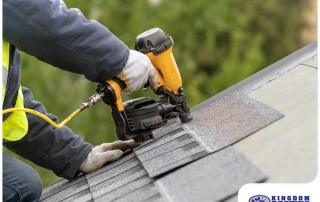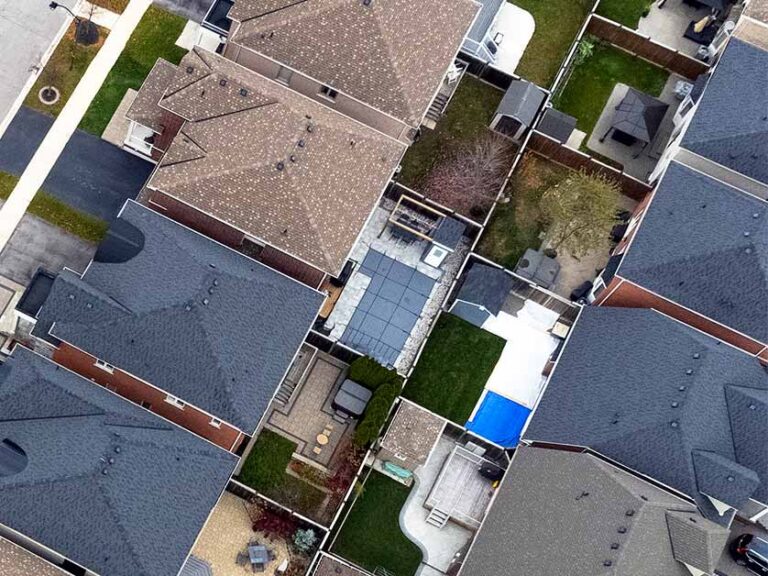The roof is not just about the shingles that you see when looking on it from the curb. It is a system consisting of many different components that work together to ensure your home is protected from the elements for as long as possible. One notable roofing feature that often gets taken for granted is the intake and exhaust vents, which make up its ventilation system. They may not be given as much attention as the shingles, but they play a critical role in regulating temperature, controlling moisture and ensuring the longevity of your roof.

In this blog post, local residential roof repair contractor Kingdom Roofing discusses everything you need to know about roof ventilation, from how it works to why it is important, as well as the different types of vents used on roofs and the signs indicating poor ventilation.
The Science of Roof Ventilation
Your roof has a ventilation system for air to flow in and out of your attic. It functions based on the principle of convection, taking advantage of the air pressure and temperature differences between the inside and outside of the attic.
As the sun beats down the roof, some of the heat that the roof surface absorbs is radiated toward the attic. This causes the air from inside your home to rise and become trapped inside the attic. If not vented out, the heat can reach temperatures well above 150 degrees Fahrenheit, exposing the rest of your roof’s components to damage.
Counteracting this heat buildup would require the roof to have intake and exhaust vents. The former are located along the soffit or eaves of the roof, and are responsible for drawing fresh air into the attic. The latter are installed near or at the peak of the roof, and are responsible for expelling hot air trapped in the attic. With these two present on your roof, continuous air circulation happens, ensuring a balanced and moderate attic temperature. This keeps the roof from deteriorating early in its life span and also ensures ongoing indoor comfort without putting the HVAC system under undue stress.
The Importance of Keeping Your Roof Well-Ventilated
A well-ventilated roof has its benefits, all of which having an impact on its longevity and performance.
-
Temperature Regulation. As hot air from the attic escapes through the exhaust vents, heat buildup is minimized. Trapped heat from within the attic can radiate down to the living areas, and without proper ventilation, your cooling system would have to work harder just to keep everyone comfortable. A well-ventilated roof helps lower energy consumption and reduce cooling costs, especially during the summer months.
-
Moisture Control. Another common issue resulting from a poorly ventilated roof is the presence of moisture in the attic. Condensation can form inside the roof, causing insulation to clump and feel damp. Not only that, but your roof and your home may be exposed to the effects of moisture damage, including mold and mildew growth and rot. A well-ventilated roof allows humid air to escape, thus reducing the risk of structural damage and keeping your family safe from health issues.
-
Extended Life Span. By reducing heat and moisture accumulation in your attic, you slow down the deterioration of your roof. Proper ventilation helps maintain the integrity of the shingles and other components. In a way, it can also help you save money on residential roof repair or a potential early replacement.
-
Energy Efficiency. A well-ventilated roof plays an important role in keeping your home energy-efficient. Moderating attic temperatures minimizes heat transfer to living spaces, which, as already mentioned above, result in lower energy consumption and increased comfort year-round.
Types of Attic Vents
Different roofing systems utilize several types of intake and exhaust vents, each with its own set of features and benefits:
-
Soffit Vents. Installed along the eaves, these vents allow cool air to enter the attic. They come with perforated panels to keep pests and debris out.
-
Gable Vents. These vents are placed at the gable ends of the roof, providing an alternate pathway for fresh air to enter the attic.
-
Ridge Vents. The ridge, or the point where two roof slopes meet, has vents that allow hot air to escape evenly along the entire length of the roof. They blend seamlessly with the roofline to preserve the aesthetic appeal of the structure.
-
Static Vents. These vents utilize natural wind forces to draw out hot air from the attic. Examples of these include turbine vents and box vents.
-
Power Vents. These vents have motorized fans to expel hot air from the attic. These are incorporated into roofing systems that require additional ventilation and are suitable for properties situated in areas with low wind flow.
Signs of Poor Roof Ventilation
Understanding the signs of poor roof ventilation is key to addressing issues that can affect your roof’s longevity and performance. As you perform visual inspections on your own, be on the lookout for the following, and notify your local roofer for a more thorough evaluation:
-
Shingle Damage. The summer season can do a number on your roof, especially the shingles. The heat absorbed by the roof surface radiates toward the heat, which should be vented out. With insufficient ventilation, the heat stays in the attic, baking the shingles on both sides of the roof until such time they start curling or blistering.
-
High Energy Bills. Is your cooling costs unusually high? If this has been happening during the summer months, it might be because of excess heat collecting inside your attic. Get in touch with your roofer as soon as possible to learn whether your roof’s ventilation is the root cause.
-
Presence of Moisture. Check for condensation on your windows, peeling paint on the ceiling, or mold growth in the attic. A thorough inspection should help determine if you are dealing with a leak on your roof or just excess moisture in your attic caused by inadequate ventilation.
Get in Touch With Kingdom Roofing!
Whether you require residential roof repair or replacement, count on the experienced team at Kingdom Roofing to get the job done right. We take pride in making sure your roof’s components, including its ventilation system, are in good working order. Call us today at (941) 217-2411, or fill out our contact form.



